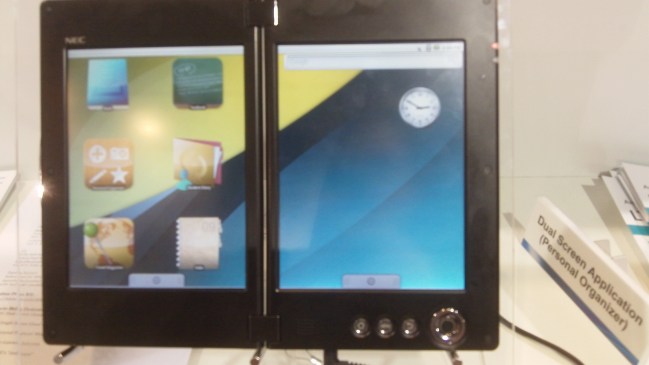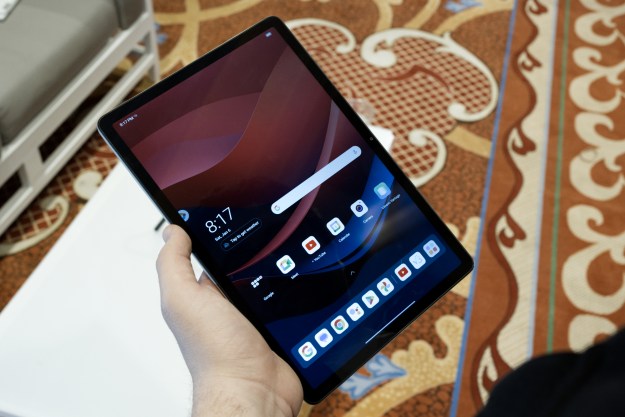
The 2011 CES might very well be remembered as the year of the tablet, and NEC is trying to push past the increasing number of competitors to the front of the class, with its dual screen tablet, the LT-W.
The advantages of a dual screen tablet are obvious, and NEC has designed the LT-W to take full advantage of the possibilities. The two screens can be used separately, or combined for one bigger screen. With the inclusion of a stylus, one side can be used as a notepad that can be written on, while the other is used as a display and that is just one possibility. NEC is actually encouraging the possible innovations that developers and users can find.
The device can also be reoriented, so while stretching an image across two screens is going to leave for an odd display that is broken in two by the bezel, turning it will display the image from the top down. If you are in a web browser, the image will be at the top, while the text will be displayed below. Once in the vertical position, it can then be used as a display on the top screen, and a touch screen keyboard on the bottom panel. Again, the choices are open to the imagination of the user and developers.
The LT-W is powered by Android 2.1, but is upgradable to 2.2, features Wi-Fi, 3G connectivity and connects through Bluetooth. In total it weighs 530 grams–or just over a pound–and measures 7-inches. The LT-W features a 5 hour battery, a 3 megapixel camera with USB and SD slots, and be powered by the ARM Cortex A8/Mobile chip.
Look for it in Japan in the second half of 2011. No word yet on a U.S. release, but it seems extremely likely.

Editors' Recommendations
- The best Samsung tablets in 2024: our 6 favorite picks
- The best tablets in 2024: top 11 tablets you can buy now
- The 6 best tablets for kids in 2024
- Samsung just launched a secret Android tablet
- How to use Split Screen View on a Samsung tablet


